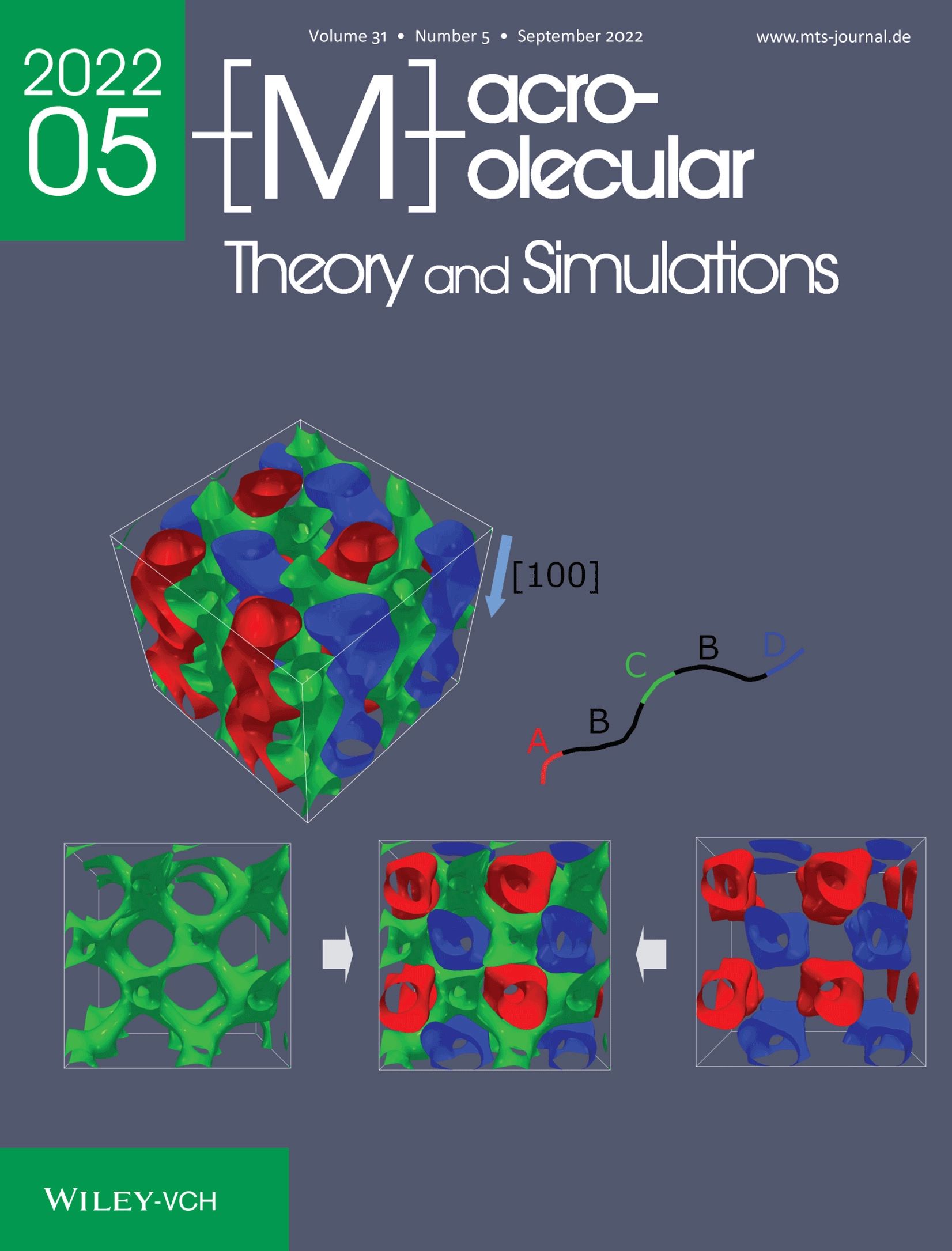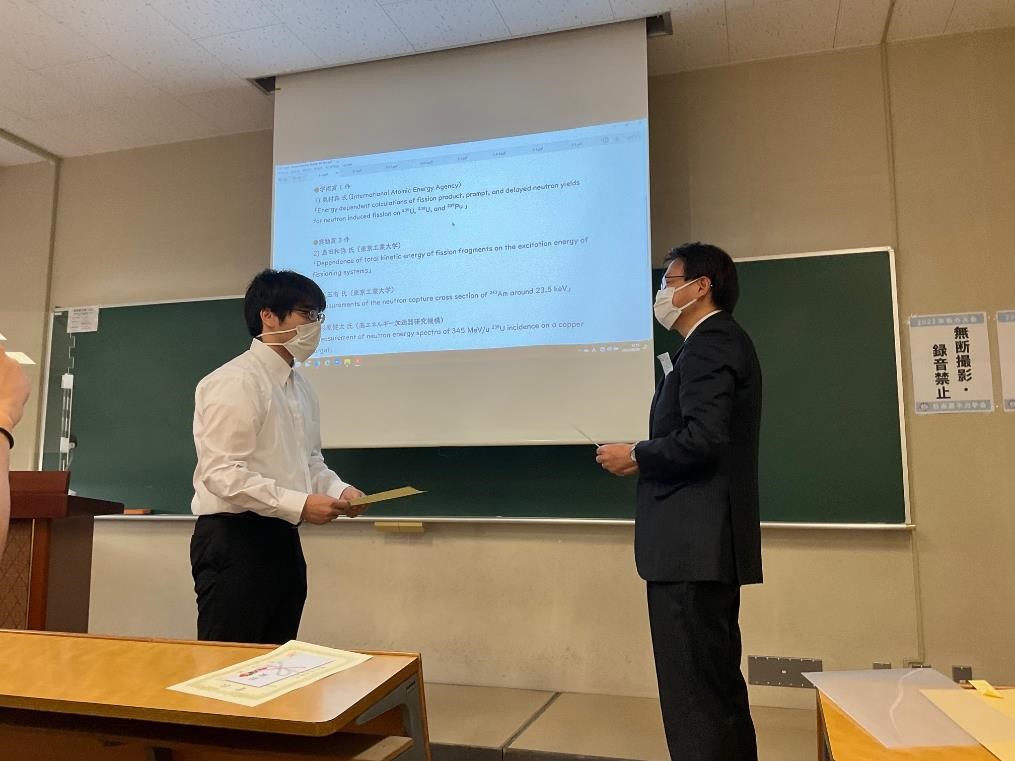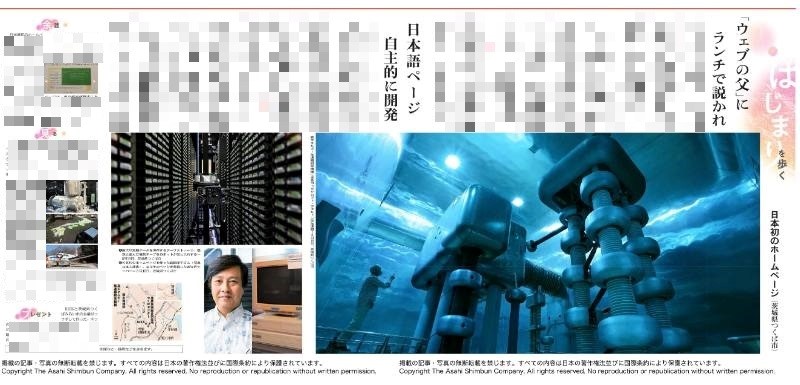Research Results by Jiro Suzuki, Associate Professor at the Computing Research Center, were featured on the cover of the September 2022 issue of the research journal Macromolecular Theory and Simulations
(English translation 2022-11-15)
The results of computer simulation calculations by Jiro Suzuki, Associate Professor at the Computing Research Center, were featured on the cover of the September 2022 issue of the research journal Macromolecular Theory and Simulations.

Jiro Suzuki and his collaborators have been studying how the "shape" of a material molecule manifests itself as a property of the material, with a particular focus on its beautiful structure. They determined the structure of ABCBD-type block copolymers in melt (*) by computer simulation methods. They varied the ratio of the block chain length under the following conditions: the A and D chains at both ends were the same length, the two B chains were the same length as well, and the block copolymer molecule is a centrosymmetric polymer molecule centered on C chain. They confirmed the 3D structure shown in the upper part of the figure. The lower part of the figure shows the view from the [100] direction. The C chain, mid-block, is represented by the green domain in the figure. In particular, the lower left part of the figure shows only C. It forms a three-dimensional structure called the Gyroid structure, which contains multiple types of twisted structures (gyro-oids) that sometimes appears in nature and is responsible, for example, for the uniquely beautiful coloration of the wings of certain butterflies. A and D domains are represented in red and blue, respectively. In particular, the lower right part of the figure shows only A and D. These are "helical" structures trapped in the Gyroid network structure, and B fills in these gaps (transparent areas in the figure). In most cases, the helix pairs are wound in opposite directions, but here, the helix pairs A and D are wound in the same direction.
Why this structure? Because the shape of the molecule is symmetric , A and D are geometrically identical. Furthermore, since they are located at both ends of the molecule, cylindrical red domains are expected to be surrounded by blue domains in an alternating arrangement. Although the Gyroid structure has several helical structures, the alternating arrangement of the two colors, red and blue, is only possible in the [100] direction (bottom right part of the figure), resulting in a square fill, or checkerboard. Thus, there is a necessity that the helix axis is placed in the [100] direction (bottom center of the figure) in the Gyroid structure consisting of green (bottom left part of the figure). In this way, one can devise a logic for the "architecture of molecule " and reproduce and explain the "structural shape" of the molecular assembly by computer simulation. The Central Computing System at the Computing Research Center was used for the simulation operations in this study.
(*) A block copolymer is a polymer molecule consisting of multiple polymer chains with different chemical properties that repel each other (like water and oil). In this study, they have calculated an ideal model molecule with penta-block four components molecule in the form A B C B D, where the repulsive forces between the different types of A, B, C, and D (six types: A-B, A-C, A-D, B-C, B-D, and C-D) are identical. In melt state without solvent (e.g., hard plastic is heated, and molecules can move as syrup), dissimilar components repel each other and coalesce to form domains (red, green, and blue in the figure correspond to A, C, and D domains), creating a phase-separated structure. A mixture of water and oil is divided into two large phases. Block chains, on the other hand, are linked intramolecularly and thus have a microphase-separated structure such that their structural period is about the size of the molecule (about 100 nm).


